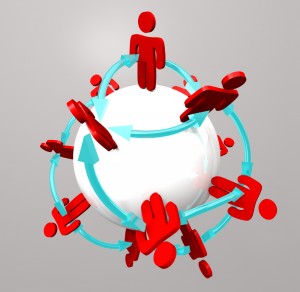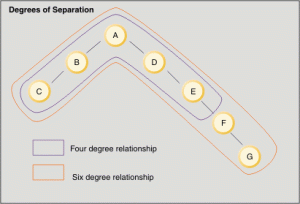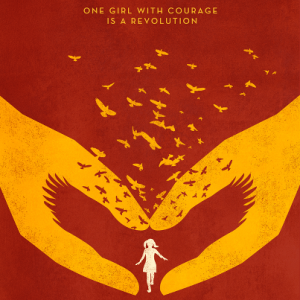Personally, I consider the nonprofit sector to be one of the most challenging and rewarding areas of public relations. Ballet Fantastique is an innovative and modern nonprofit ballet company located in Eugene; the company works diligently every day to continue to foster support for its artistic performances. Hannah Bontrager has a wide array of responsibilities as the executive director of Ballet Fantastique. She not only handles the core logistics of the company but also heads all PR efforts and perform s as a principal dancer. Hannah’s mother, Donna Marisa Bontrager, is the artistic director of Ballet Fantastique; the two work together seamlessly and contribute to the accomplishments of the company. Hannah’s level of involvement with Ballet Fantastique from all angles gives her an intense passion and investment in the company, which she attributes to its success.
s as a principal dancer. Hannah’s mother, Donna Marisa Bontrager, is the artistic director of Ballet Fantastique; the two work together seamlessly and contribute to the accomplishments of the company. Hannah’s level of involvement with Ballet Fantastique from all angles gives her an intense passion and investment in the company, which she attributes to its success.
“Be a spokesperson wherever you are. Be so passionate about it that you WANT to talk about it to everyone. Bring people onto your team who are that excited about your work and product, too.”
After learning more about Hannah’s work with Ballet Fantastique and the creative ways she integrates public relations with her dance company, I have compiled 10 pieces of advice I have learned from Hannah. These are especially applicable to individuals who hope to do public relations for a small nonprofit program, but I would argue this advice could be extended to all areas of work.
1. Work harder than 100%. Nonprofits face the issue of fewer resources than many other organizations; hard work and diligence can counteract that. “Be willing to work twice as hard as everyone else, and try not to get resentful that you have to.”
2. Don’t be afraid to be the first. Ballet Fantastique paved the way for social media among arts groups in Eugene. It was the first company to have a Facebook, Twitter, YouTube; and the efforts to break this norm have been enormously successful.
3. Think outside the box. Recognize your weaknesses and use them to your advantage. Ballet Fantastique was able to think outside the box and utilize one of the best forms of promotion to its benefit – social media (not to mention it is free!).
4. Evolve continuously. Don’t get stuck using the same techniques over and over; people will get bored. Change things up to retain the audience’s interest – it will be more effective. Ballet Fantastique uses a variety of media, “The print media makes a hard visual impact, and we like to use online as a call to action – making it easy right then and there to click a link and sign up or buy tickets.”
5. It’s okay to let things go. Make sure to pay attention to tactics that work and what doesn’t. One of the hardest milestones for Hannah was recognizing when to drop a project; it is disappointing if something does not turn out to be worth the extra time and effort. She recommends stepping back from the situation; it is easy to get wrapped up in something that you think will work.
6. Don’t let a small budget restrict you. Ballet Fantastique’s principal difficulty in promotion is a low advertising budget, but Hannah spins this constraint in a positive light by sharing how it allows her to be “more gutsy, more hard-working, and more agile in many ways.”
7. Keep innovating. There is always a way to work around any obstacle with creativity and originality. Hannah consistently fosters partnerships with other local and larger organizations for advertising trade. Her innovative partnership techniques have grown an overwhelming level of support from the community. “Many radio stations, newspapers and magazines are willing to trade for tickets or program ads because they are so excited about the unique work that we do.”
8. Encourage word of mouth publicity. Keep up with technology; so much of our world today revolves around the Internet and social media – make sure you have a positive and active voice online. However, don’t underestimate the power of direct person-to-person publicity either! Positive discussion about the organization brings tremendous value. Ballet Fantastique often holds competitions on its social media platforms to engage and grow its audience, as well as encourage supporters to share information, updates, coupons and deals with each other.
9. Even nonprofits can become involved in outreach. Recognize that as much as your nonprofit may need help, others need help too. Becoming involved with the community can grow support for your organization. Ballet Fantastique is involved in a multitude of outreach programs ranging from awarding training scholarships to talented underprivileged kids, providing free community-based performances to kids in local schools, and retaining flexibility in where they perform – to bring dance to those who might not otherwise see it.
10. Get excited and have fun! Because nonprofit work is so challenging, passion is one of the most important aspects to a successful organization. Remain focused and professional but don’t be afraid to approach obstacles with a lighthearted attitude – it allows for innovation and willingness to put in that extra time and effort.
 For one of my public relations classes we were instructed to research an issue and create an infographic. Infographics are a valuable way to share information with an audience because they are a form of visual communication. Many people will retain information and research better if they can absorb it in a visually appealing manner because it is more memorable. I chose to create an infographic about the dangers of the Internet for teenage users. I focused on privacy issues and the threats posed by strangers online.
For one of my public relations classes we were instructed to research an issue and create an infographic. Infographics are a valuable way to share information with an audience because they are a form of visual communication. Many people will retain information and research better if they can absorb it in a visually appealing manner because it is more memorable. I chose to create an infographic about the dangers of the Internet for teenage users. I focused on privacy issues and the threats posed by strangers online.









